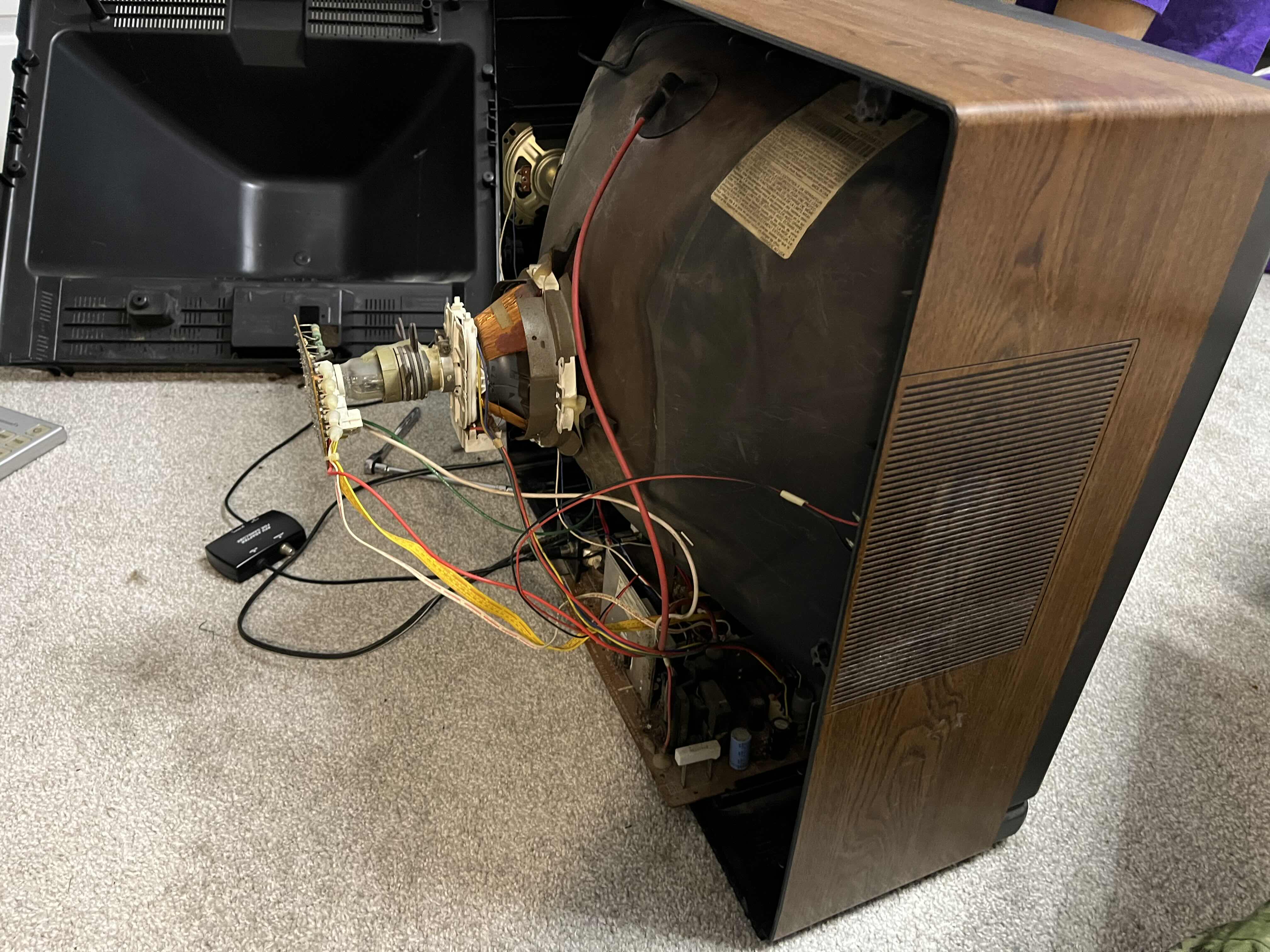fixing an old sanyo CRT TVby quirble, january 15 2015 caution! CRTs are big heavy hateful devices that actively try to kill you or themselves! always discharge them in a proper way, even if you're sure that the tube you're discharging has a bleeder resistor! better to be safe than dead!a friend messaged me in december (2024) asking me about a strange noise coming from his Sanyo DS25030 CRT TV that he picked up off facebook marketplace. it was a weird, almost "physical"-sounding noise (imagine an air conditioning unit with a bad bearing. the vibration noise is immense!) that was extremely loud and almost seemed to vibrate the television itself. it wasn't affected at all by the speakers - muting did nothing - so he didn't really know what to do. i decided i would come over and help diagnose it.a physical sounding vibrating noise coming from a TV, and it's not the speakers? unless the TV has decided it wants to become an internal combustion engine, it sounded to me like a relay had either gone bad or something in-line with a relay had gone bad. relays are cool. tl;dr, they use electricity to activate an electromagnetic coil which can switch the flow of electricity on and off of key parts! i went over after a few days to come look at it in-person (after finding out that there were NO good service manuals online - bummer!) and maybe fix it.

yep, it's a CRT tv. who could have thought. we ended up taking the tube out so we could get to the mainboard and take a once-over look. i had the idea to test the CRT while it was out of the case and see if the "relay theory" I had was true. (this is dangerous (≧◡≦) be careful!) i put a wooden board up to the relay i thought was making the noise and took a listen. yep, the vibration was coming from this! it's a good sign and a bad sign. (i also tapped the relay a few times with the board, nothing.)

this implies there was something besides the relay itself that was wrong. i began to realize the relay was actually working "correctly" (activating and deactivating the magnetic coil over and over several times a second), it was the smooth flow of electricity to the coil that had gone wrong. you know what that means~ it's re-capping time! capacitors have a finite lifespan, and those that are 20+ years old are on death's door. as they break down, loads of interesting things happen. electrolytic capacitors previously used for "smoothing" the flow of electricity can now just... not do that anymore! that seemed to be the case here. i manually sketched out how the relay got its coil electricity, and lo-and-behold, there was a capacitor living there. while it didn't have any visible sign of leaking or damage, it wouldn't hurt to replace a capacitor. the problem was... i didn't have any capacitors on hand! so you think i would just go up and leave at this point, since i didn't have any spare parts to fix it right? damn, i wish! turns out the friend had an old busted Sony VHS player lying around, and with his permission i harvested a capacitor out of its power supply. same measurements (470uF, 25V), why not! i hastily unsoldered that from the Sony. sorry VHS, but you're a dead format fixing an even deadder format, be grateful~
i soldered it in, tested the CRT again, and the buzz was gone. what a relief. of course, eventually the whole thing will need a proper recap with brand new components (if the friend wants to keep the TV around), but for now my "temporary" fix for it works! i give it 5 years until it breaks again (* ̄▽ ̄)b
|